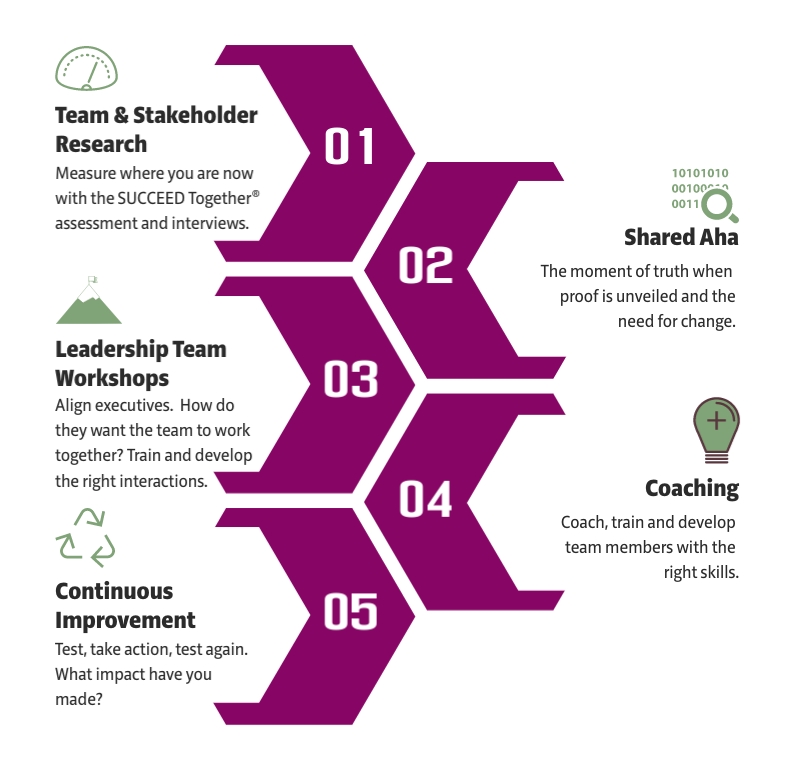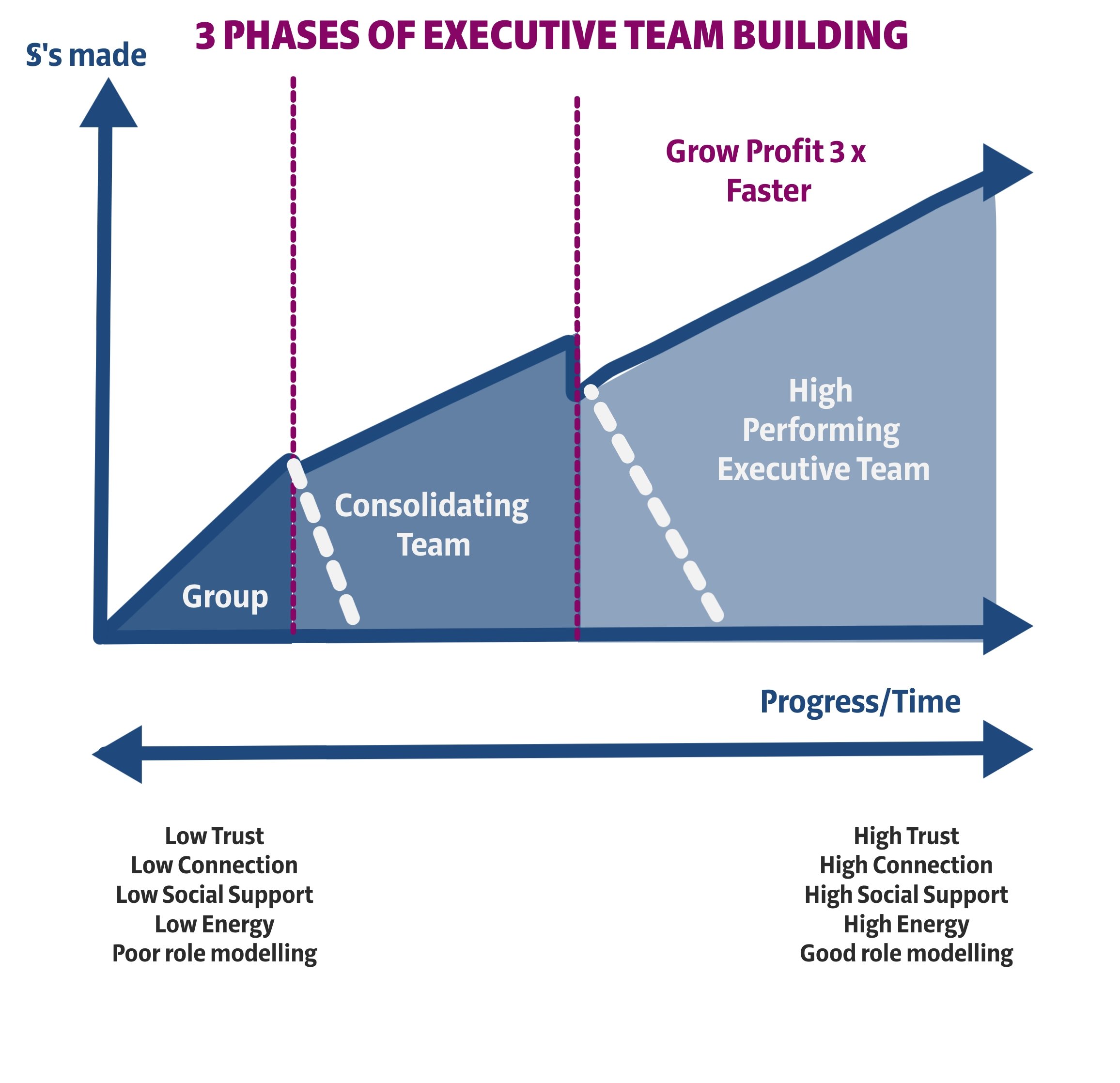
In 2008, when Barack Obama announced his national security team he explicitly mentioned that he wanted to appoint a team that would avoid groupthink. He said:
Executives spend their career delivering in their area of expertise. Once they get into the leadership team, it’s no longer about how their function is performing, but the organisation overall.
But how many executives really know that?
According to the Centre for Creative Leadership, 65% of senior executives indicated their executive teams were experiencing a clash between functional and enterprise accountabilities. Fewer than 1 in 5 rated their executives teams as very effective.
Gathering a bunch of talented high performers and believing they will seamlessly gel sounds great. Unfortunately, it rarely works in practice.
Every leader knows that collaboration is important theoretically. But an inability to collaborate is a consequence of being hired to deliver results and management rewarding that performance. To encourage people to collaborate requires making the term more concrete and tying it to the work to be done with the right rewards.
So how do you do that?
In my work with leadership teams, it is common to find that the majority of team members believe their team is working well.
The reality is that leadership teams become so comfortable with how things are operating that groupthink sets in. The quality of decision-making suffers as a close-knit group become insulated from dissenting viewpoints. Maintaining group harmony and keeping things the same becomes the norm. Fixing issues and executing new strategies are avoided, in preference to working on daily tasks.
Executives don’t often realise they’re not collaborating well and the full impact on the organisation. To break through this cognitive bias, requires an exploratory five-step process to help people figure out why working harmoniously will actually improve their individual results. These five steps work towards building stronger consensus and an urgency to change.

One of the traits of a successful leadership team is they leverage data to inform customer wants and needs. But they also use data to provide insights and evidence of improvements to be made within their own team and across their organisation. After all, how can you improve your results if you don’t know what your employees or customers want from the leadership team? Your customers and employees will tell you everything you need to know to improve your organisation.
Undertaking research provides you with an objective snapshot of how you are really performing. Best practice is a combination of data-based (quantitative) and insights-based (qualitative) results - providing a powerful double whammy approach.
Quantitative results provides numbers for those who need to see data, while the qualitative data unpacks why people feel the way they do and what they want from the leadership team. Knowing the why gets your leaders to lean forward and make it a much higher priority in their life. The truth is people are not as interested in information if they don’t know why.
In the SUCCEED Together Leadership Team Assessment®, we do something quite unusual. We break down the results to show a comparison between what the CEO believes versus other team members. There are two reasons for this. The first one is that the CEO is modelling vulnerability and honesty through this process (a key part to improving safety in the team). While the second reason is that it provides deep insights into the differences in expectations, which unlocks deeper conversations.
For example, say the CEO rates lower for the statement "Team members address performance issues with each other." In a debrief session, when the results are unpacked, asking the CEO why they feel that way can help leaders understand why it's important that they learn to challenge one another in a healthy manner. It can also highlight why they feel they cannot do that and what they need from the team to move forward.
This is that beautiful moment of truth when executives start to understand how poor leadership team interactions are negatively impacting the organisation. This can be very powerful if stakeholder interviews are undertaken with employees and customers who bear the brunt of poor leadership behaviours.
Externally produced data and an outside perspective provides credibility and a proven approach to fully explore hidden issues. Particularly, for those in denial that individualistic performance is hurting the organisation.
This can be incredibly helpful for the CEO or HR director who has been pushing for change, but have had limited success.
Benchmarking how the leadership team is performing compared to others leadership teams can also bring out people’s competitive streak. But in a good way. It’s also an opportunity for the team to work together to solve a problem - except this time the problem is how they interact and communicate.
In the SUCCEED Together Leadership Team Assessment®, your results are benchmarked against other similar organisations, so you can see how your team is performing to others.
Facing the reality of how the team is performing is an opportunity to envision together how the team needs to communicate and interact for future success. It’s about deciding on “Do we settle for how our team is now, or do we work towards the team being the best it can be?”
Unlocking effective team work requires connecting the benefits of collaboration to the motives of success-minded individuals.
Getting people to work together requires encouraging them to figure the signature behaviours required for future success together. This is how you get alignment. People will find a way to work together when they realise how collaboration will help them.
Undertaking regular workshops that are customised to what your team and stakeholders require ensures you don't waste time learning the wrong things.
Furthermore, high achievement teams take the time to learn together. Not only does this improve your collective intelligence, but helps team members to listen to one another, share information and understand one another better. This ensures your leadership team is learning and growing together. After all, you can’t expect an organisation to grow if the people within it aren’t growing.
According to Olivero, Bane and Kopelman, training on its own improves productivity by 22%, but combined with coaching it increases productivity by an astonishing 88%.
Some leaders struggle to know how to build trust with other stakeholders, while others want to get better.
Individual coaching can help your leaders self-reflect and practise new leadership tools. This can be combined with 360 degree interviews for more powerful insights.
Organisations need to be continuously disrupting themselves to move forward, otherwise they are at risk of failure.
One of the standout themes from our research within midsize companies was that achievement zone leadership teams (those that had increased their revenue by 30% during CEO tenure) were focused on continuous improvement. They wanted real-time feedback on their performance.
Just doing workshops wasn't enough. There needs to be action and commitment to constant improvement. This requires executives who are always hungry to improve and challenge the status quo.
The antidote revolves around never feeling that the business or the leadership team have made it.
Part of this process is checking in regularly to see how the leadership team is performing - comparing present to past results for signs of improvement. After all, assuming that all is well is a sign that the team has fallen into abatement.
You can think of this five-step process as like movement sensor lights that illuminate the path to follow progressively. Only showing you what needs to be done now - helping you all feel safe and not overwhelmed by where the journey might take you.
If you feel this is a process that would work well for your leadership team, go to Building Trust in Leadership Teams to learn more or contact Marie-Claire Ross for a discussion.

In 2008, when Barack Obama announced his national security team he explicitly mentioned that he wanted to appoint a team that would avoid groupthink. He said:

Everything is a product of evolution. Businesses go through cycles and need the right executives working at the right level for the business at that time. This comes...